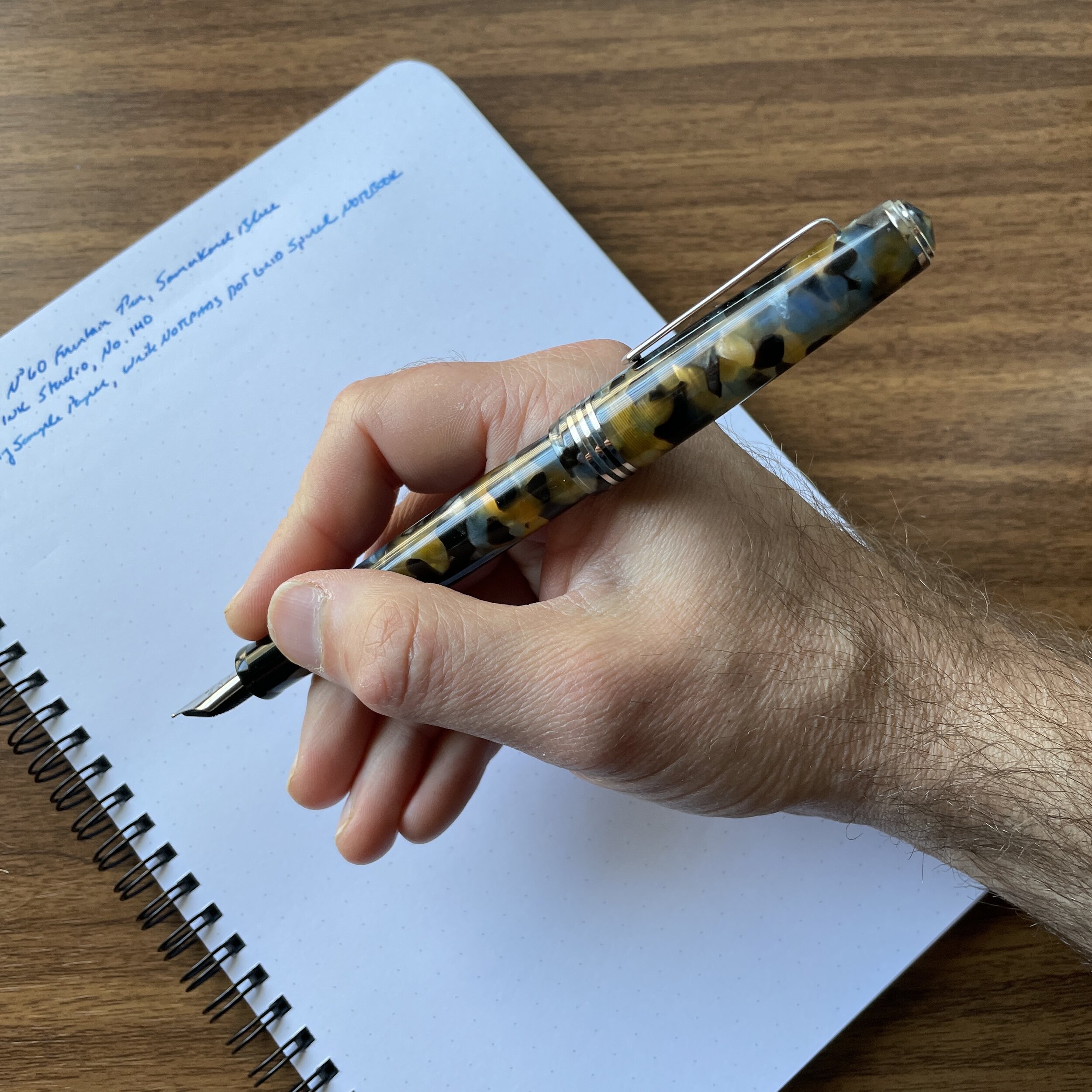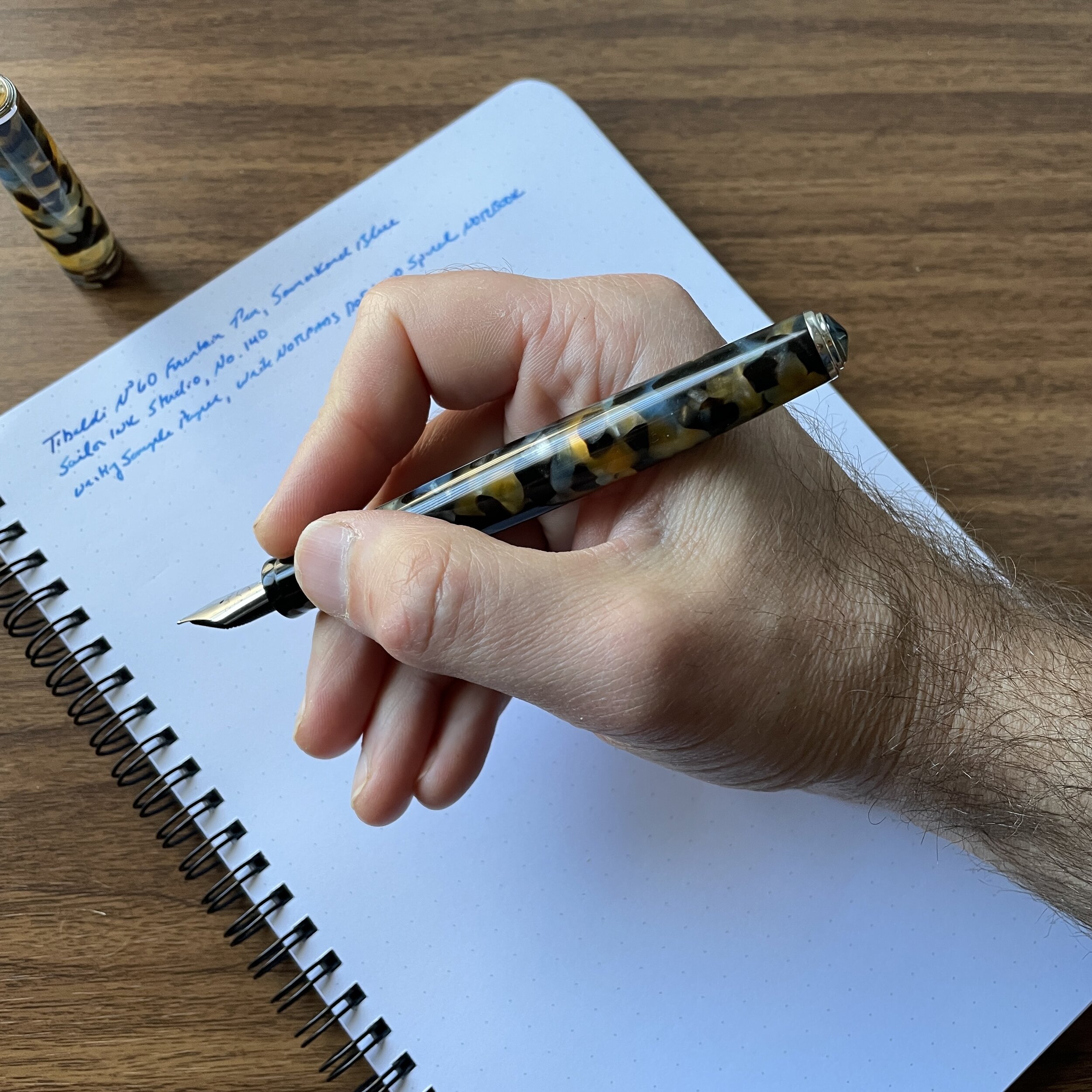Italian brand Tibaldi has a long and storied history in the pen industry dating back to 1916, when it was founded in Florence. Over the years, Tibaldi pens have alternated between prominence and obscurity, most recently achieving a degree of fame/infamy for their absolutely gorgeous - and now scarce and absurdly expensive - “impero” celluloid. After several changes in ownership and management over the years, I understand that Tibaldi is now owned by the Aquila family, which per the Tibaldi website also has an ownership stake in Montegrappa. Given that Tibaldi has been headquartered in Bassano del Grappa (home of Montegrappa) since 2004 (as well as the line of pens released at some point dubbed “Tibaldi by Montegrappa), it’s clear to me that there is common ownership and that Tibaldi is a Montegrappa “sub-brand,” though I can’t find anything online where the companies expressly confirm that relationship.
Until I started researching this review, I was actually unaware of the relationship between these two Italian pen companies, but now that I think about it the business strategy kind of makes sense. I enjoy Montegrappa fountain pens, especially the materials they use, but they do get knocked for their high (some would even say astronomic) price points, even on their introductory or “lower-end” offerings. Since Tibaldi pens seem to top out at less than $250 (and even under $200 depending on where you buy), I would surmise that the strategy is to protect the “premium” image of the Montegrappa brand by releasing a more accessible line of pens under the Tibaldi moniker. It’s not a bad strategy, though I do think Tibaldi might have an easier time catching on if more people readily understood the connection to Montegrappa, an established modern brand.
Design and Build Quality
Any time a pen company releases a fountain pen featuring blue-flecked tortoiseshell material, either celluloid or acrylic, I’m going to buy it. (Don’t ask me - it’s one of those things.) This material reminds me of the blue tortoise celluloid used in my Faggionato Petrarque, though of course this Tibaldi uses acrylic and not celluloid. Regardless, the material is beautiful. The pen itself features a classic vintage-inspired design, reminiscent of various vintage fountain pens from Tibaldi and other brands. The triple cap band is a nod to some of my favorite vintage pens (though this Tibaldi is of course much larger - more on that below). The Tibaldi N.60 shows very little in the way of branding, with only a subtle “Tibaldi” engraved right above the cap band.
Build quality seems solid. The metal clip feels secure and tight, and the cap threads are smooth, opening with less than two turns. Inside the barrel, the acrylic is thick, with just enough room for the converter to fit without rattling.
Nib and Overall Writing Experience
The N. 60 is, to me, a larger pen, though in terms of modern sizing it’s best characterized as a mid-size pen. It posts securely, though feels a touch top-heavy when you do post. Most people will probably write with this one unposted. The section is on the shorter side, causing me to tend to grip the threads when writing, though because the threads aren’t sharp I never experienced any serious discomfort.
The nib is where Tibaldi has attempted to distinguish itself from other brands targeting the $150-200 price bracket. While there is nothing necessarily special about the stainless steel nib itself, Tibaldi has paired it with an ebonite feed, typically the hallmark of much more expensive Montegrappa pens. The presumptive benefit of more consistent ink flow, however, doesn’t really appear here. While my N.60 isn’t a dry writer, I’m not sure I can discern that much of a difference between this nib and any other stock Bock or JoWo nib paired with a standard plastic feed. I did experience a couple of hard starts when the pen was new, but those have largely disappeared following a short break-in period of me writing with the pen consistently.
Writing sample with a stainless steel medium nib, Sailor Ink Studio 140, on Write Notepads Dot Grid Paper.
Takeaways and Where to Buy
If I had to point to one thing that would make the Tibaldi N.60 worth buying, it’s the materials Tibaldi has chosen, particularly the “Samarkand Blue” and the “Amber Yellow”, as well as certain design touches such as the triple cap band which give the N.60 a higher-end feel than its price point would suggest. Otherwise, I feel like the N.60 struggles to distinguish itself from its competitors in terms of writing experience, and I guess I expected a bit more ink flow from my ebonite feed. Don’t get me wrong - this isn’t a bad pen, and if you love the look of it, you will get a nice writer that feels built to last. If I had to pick a pen for a close comparison, I would say that the N.60 strikes me as a more upscale Levenger True Writer, which many people love, and which shares some of the same design language.
Similar materials: I like the Samarkand Blue acrylic almost as much as the “Honey Noire” on my Conway Stewart Model 100.
I purchased the pen featured in this review from Appelboom, which carries the full line of Tibaldi pens. The Tibaldi No. 60 is currently priced at around $175, depending on the exchange rate, and in addition to the “Samarkand Blue” model shown here, comes in black and three other marbled colors: Ruby Red, Emerald Green, Amber Yellow, and Emerald Green.
Disclaimer: This post does not contain affiliate links. The Gentleman Stationer is supported via pledges from the T.G.S. Patreon Program and sales through the T.G.S. Curated Shop.

